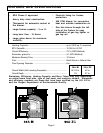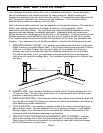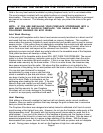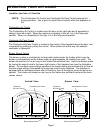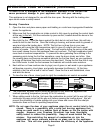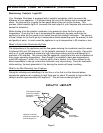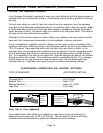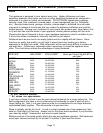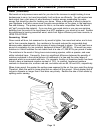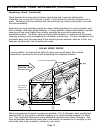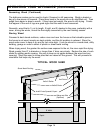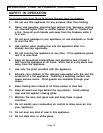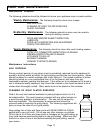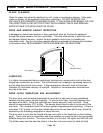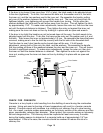
Page 12
OPERATING YOUR APPLIANCE (Continued)
Wood (Continued)
Wet wood not only causes more work for you due to the increase in weight making it more
burdensome to carry, but most importantly it will not burn as efficiently. You will receive less
heat output from a wet piece of wood because it wastes energy evaporating the water,
energy that should be used for heating your home. When a wet piece of wood is placed in
your appliance it will also cause more creosote accumulation on the glass, in the appliance,
flue and chimney. The primary reason for this is, as the water evaporates from the wood it
will "spit" creosote-like material. If you can hear your wood sizzle or you can see moisture
bubbling from the ends of the logs placed in a HOT appliance, your wood is too wet! Another
big advantage to burning seasoned wood, aside from higher efficiency and less creosote, is
LESS POLLUTION!
Seasoning Wood
Green wood will burn, but seasoned or dry wood is lighter, has more heat value, and is less
apt to form creosote deposits. Any moisture in the wood reduces the recoverable heat
because water absorbs heat in the process of being changed to steam. The net heat from a
pound of completely dry (no moisture) hardwood is about 7,950 BTU's. All wood has some
moisture in it which reduces the net usable heat at a rate of 1,200 BTU's per pound of water.
The moisture in the wood of living trees varies among species, within a species, and even
within individual trees. Frequently, there is a significant difference between the quantity of
moisture contained in the central column of heartwood of a tree and the outer layers of
sapwood which is surrounded with bark. For example, freshly cut American beech has been
found to have a heartwood moisture content of 72%. In contrast, heartwood moisture
contents in American elm, northern red oak, and white ash are 95, 80 and 46%, respectively.
When drying wood, the greater the surface area exposed to the air, the more rapid the drying.
Therefore, stack the wood in loose piles that are raised off the ground. Wood greater than 8
inches in diameter or longer than 4 feet dries very slowly. Reduce the size of such sticks by
splitting and/or sawing.



